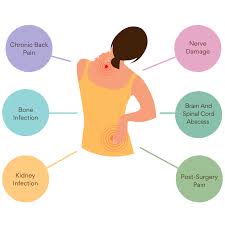
Rigors are sudden episodes of shivering accompanied by a feeling of coldness, which can occur even in a warm environment. They are often a sign of a serious infection or illness and are typically accompanied by fever. This article will explore what rigors are, their causes, symptoms, and possible treatments.
What Are Rigors?
Rigors refer to episodes of severe shivering and chills, often experienced when the body is fighting an infection. During a rigor, the muscles contract rapidly, which can cause the body to shiver uncontrollably. These episodes are usually a response to a rise in body temperature, particularly during a fever.
Causes of Rigors
There are several underlying causes of rigors, with infections being the most common reason. Some of the main causes include:Bacterial Infections: Bacterial infections like pneumonia, sepsis, or urinary tract infections are common causes of rigors. When the body detects an infection, it raises the body temperature to fight the invading bacteria, triggering a fever and rigors.
Viral Infections: Certain viral infections, such as the flu or COVID-19, can lead to rigors. The body’s immune system responds by raising its temperature to weaken the virus, leading to chills and shivering.
Malaria: Malaria, which is caused by a parasite transmitted by mosquitoes, can lead to recurring bouts of rigors along with fever, as the parasite infects red blood cells.
Other Illnesses: Rigors can also occur due to diseases like meningitis, endocarditis (infection of the heart), and other systemic infections. In some cases, rigors can be triggered by non-infectious causes such as an allergic reaction or exposure to cold.
Symptoms Associated with Rigors
While the hallmark of rigors is uncontrollable shivering and chills, they are often accompanied by other symptoms, including:High Fever: A fever that spikes suddenly, usually above 101°F (38.3°C), is a common symptom.
Cold Sensation: Despite the fever, individuals feel cold and may wrap themselves in blankets.Muscle Pain: The rapid contraction of muscles during shivering can lead to aches and pain.Sweating: After the fever peaks, profuse sweating may follow as the body temperature returns to normal.Fatigue: Rigors can be exhausting, leaving individuals feeling weak and fatigued.
Diagnosis of Rigors
Diagnosing the cause of rigors usually involves identifying the underlying infection or condition. Physicians may perform several diagnostic tests, including:Blood Tests: To check for signs of infection, such as elevated white blood cell counts or bacterial cultures.
Urine Tests: These can help detect infections in the urinary tract.Imaging Tests: In cases where lung infections are suspected, chest X-rays or CT scans may be necessary.Additional Tests: Depending on symptoms, further investigations like lumbar punctures (for meningitis) or stool tests (for malaria) might be conducted.
Treatment Options for Rigors
Treatment for rigors depends on addressing the underlying cause. Some common treatment approaches include:Antibiotics: If the cause is a bacterial infection, antibiotics will be prescribed to treat the infection and reduce the fever, which, in turn, alleviates rigors.Antiviral Medication: For viral infections, antiviral medications may be used if appropriate, such as for influenza or certain types of viral pneumonia.
Antimalarial Drugs: If malaria is diagnosed, specific antimalarial medications are given to target the parasite causing the rigors.Fever Management: Over-the-counter medications like acetaminophen or ibuprofen can help lower fever and provide relief from rigors.Hydration: Staying well-hydrated is essential, especially when experiencing fevers and sweating.
Subscribe to Follow Global Trends for daily global news.
Find Out How To Make Money As A Full Time Writer/Blogger Guide.
To Advertise, Advertise Your Affiliate Links on FollowGlobalTrends.com for Just $1 Per Link Per Month!
Related Articles
Growing mushroom houses
Moon habitat
Mycelium construction
Lunar architecture
Sustainable building materials
Space habitation
Fungal growth
Myco-architecture
Extraterrestrial construction
Lunar environment
Renewable resources
Self-repairing materials
Space exploration
Written By: Enyoghasi Ngozi pricillia
,

